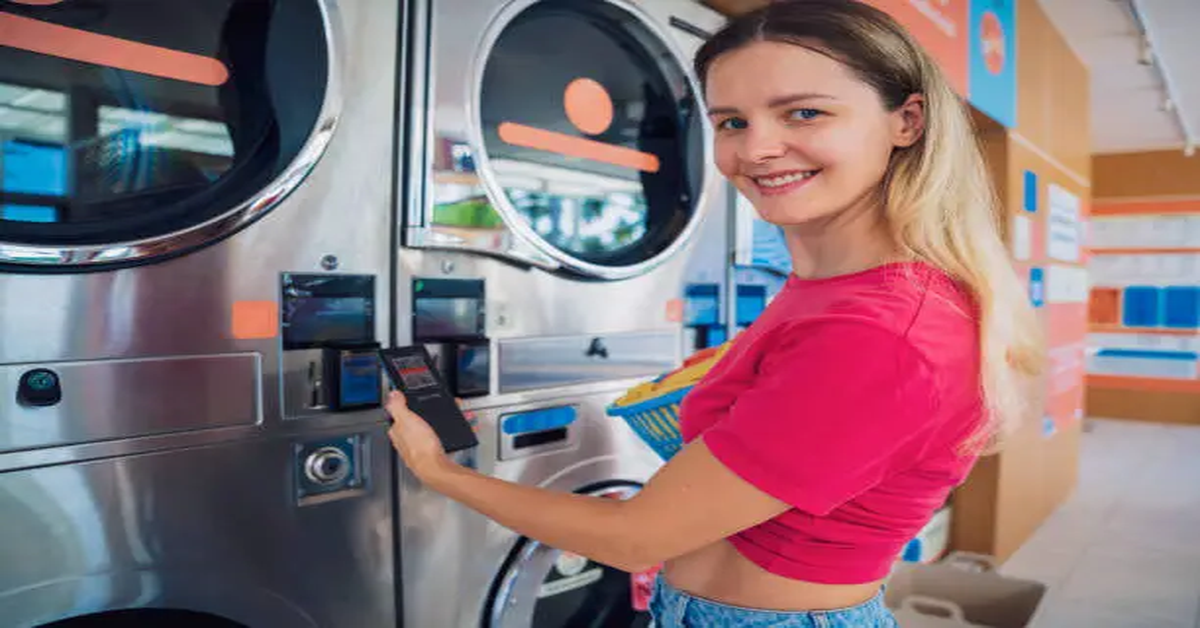
The search for a laundromat for sale has become increasingly common among aspiring entrepreneurs and investors looking for steady, long-term business opportunities. Unlike many small businesses that rely heavily on constantly changing trends or personal branding, laundromats represent a basic necessity-driven model. No matter how digitalized society becomes, clean clothing remains a requirement, and not everyone owns an in-home washer and dryer. As a result, laundromats have sustained profitability for decades and are often described as a recession-resistant business.
But what does it really mean to purchase a laundromat for sale? The process involves much more than simply spotting an available store and signing a purchase agreement. Buyers must carefully analyze the location, equipment condition, operating expenses, cash flow, competition, and community demand. They must also understand the nuances of property leasing, equipment financing, and customer service in order to determine whether the investment is worthwhile.
This comprehensive article will explore every aspect of laundromat ownership, with an emphasis on buying an existing laundromat that’s already for sale. We’ll break down the advantages, challenges, costs, financing options, market trends, and ownership responsibilities. By the end, you’ll have a clear picture of whether a laundromat purchase fits your goals and how to evaluate opportunities effectively.
Why Laundromats Are Attractive Investments
Laundromats have long been seen as stable, community-centered businesses. Their appeal lies in the consistent demand for laundry services, relatively low labor requirements, and predictable revenue. Unlike restaurants or retail stores, which often face fluctuating consumer preferences, laundromats offer an essential service that people need regardless of economic conditions.
Key Reasons Investors Seek Laundromats
- Recession Resistance
Laundry is a necessity, not a luxury. Customers will always require clean clothes, meaning laundromats typically sustain business even during economic downturns. - Cash Flow Stability
Laundromats tend to generate steady cash flow through self-service machines, reducing reliance on high-maintenance sales strategies. - Scalability
Owners who succeed with one laundromat often expand to multiple locations, creating passive income streams across several neighborhoods. - Minimal Staffing
Many laundromats operate with little or no staff, depending on whether additional services like wash-and-fold are offered. - Community Anchor
A laundromat can become a neighborhood hub, especially in urban areas or apartment-heavy communities without in-unit laundry.
Buying a Laundromat for Sale vs Starting from Scratch
Laundromat for sale One of the biggest decisions potential owners face is whether to buy an existing laundromat or start a new one from scratch. Each approach has pros and cons.
Table: Comparison of Buying vs Starting New
| Aspect | Buying a Laundromat for Sale | Starting From Scratch |
|---|---|---|
| Initial Cost | Higher upfront (purchase + goodwill) | Lower or higher depending on equipment |
| Existing Customers | Already has a customer base | Requires marketing to attract new users |
| Equipment | May be outdated; replacement costs required | Brand new machines with warranties |
| Cash Flow | Immediate cash flow from day one | Takes time to establish profitability |
| Risk | Lower since performance history is available | Higher, as success depends on predictions |
| Control | Limited by existing layout and setup | Full freedom to design and build |
Most new investors prefer buying an existing laundromat for sale, since it offers an immediate customer base and proof of profitability, whereas starting from scratch involves higher risk and slower returns.
What to Look for When Buying a Laundromat for Sale
Before purchasing, it’s essential to evaluate both the business itself and the broader market conditions.
1. Location and Demographics
Location is perhaps the single most important factor in laundromat success. Look for areas with:
- High renter populations.
- Limited in-unit washer and dryer availability.
- Moderate-to-high foot traffic.
- Strong population density.
2. Equipment Condition
Laundromat for sale machines are the backbone of the business. Assess:
- Average machine age.
- Efficiency and energy consumption.
- Maintenance history.
- Mix of washer sizes (small, medium, large).
3. Lease Terms
Many laundromats operate in leased spaces. Consider:
- Length of lease and renewal terms.
- Rent increases over time.
- Restrictions on modifications or subleasing.
4. Utility Costs
Water, electricity, and gas are major expenses. Energy-efficient equipment can significantly reduce operating costs.
5. Revenue Streams
Determine whether income comes solely from machines or if there are added services like:
- Wash-and-fold services.
- Dry cleaning drop-off partnerships.
- Vending machines for snacks, drinks, or laundry supplies.
- Pickup and delivery laundry options.
6. Competition
Evaluate other laundromats in the area. If multiple locations exist, assess whether demand is still sufficient to sustain another.
Financial Considerations
The economics of buying a laundromat for sale vary depending on size, location, and equipment.
Typical Costs
| Expense Category | Estimated Range |
|---|---|
| Purchase Price | $100,000 – $500,000+ |
| Equipment Replacement | $50,000 – $200,000+ |
| Lease/Rent | $2,000 – $10,000 per month (location-based) |
| Utilities | $3,000 – $7,000 per month |
| Insurance | $2,000 – $5,000 annually |
| Licensing & Permits | $500 – $2,500 |
Revenue Potential
- Small laundromats: $15,000 – $25,000 annual profit.
- Medium-sized: $50,000 – $100,000 annual profit.
- Large or multi-location: $200,000+ annual profit.
Profit Margins
The average profit margin for laundromats typically ranges between 20% and 35%, depending on expenses and services.
Financing a Laundromat Purchase
Laundromat for sale is a significant financial commitment. Fortunately, multiple financing options exist:
- Traditional Bank Loans
Banks may finance laundromat purchases if the buyer has good credit and collateral. - Small Business Administration (SBA) Loans
SBA loans are popular for laundromats due to their lower down payment requirements and longer repayment terms. - Seller Financing
In some cases, the seller may finance part of the purchase price, reducing upfront costs. - Equipment Financing
Specialized lenders provide financing specifically for washer and dryer machines. - Partnerships
Investors may partner with others to share the financial burden and split profits.
Benefits of Buying a Laundromat for Sale
- Immediate Customer Base – No need to build from scratch.
- Predictable Cash Flow – Historical financials provide insight into performance.
- Established Brand Recognition – Existing customers already know the location.
- Community Engagement – A laundromat often serves as a gathering spot.
- Potential for Expansion – Owners can add services to increase profitability.
Challenges and Risks
While laundromats offer opportunities, they also carry risks.
- High Utility Costs – A large portion of expenses comes from water and energy.
- Equipment Breakdowns – Repairing or replacing machines is costly.
- Competition – Saturated markets reduce profit margins.
- Management Needs – Despite being low-staff, laundromats still require regular oversight.
- Lease Dependency – Owners renting space risk being displaced if leases aren’t favorable.
Trends in the Laundromat Industry
The laundromat industry is evolving with modern consumer preferences.
Key Trends
- Eco-Friendly Equipment – Growing demand for energy-efficient machines.
- Cashless Payment Options – Customers increasingly prefer card or mobile app payments.
- Value-Added Services – Pickup and delivery laundry services are becoming popular.
- Comfort Amenities – Some laundromats now include Wi-Fi, coffee shops, or lounges.
- Technology Integration – Apps for machine availability, payments, and loyalty programs.
Tips for First-Time Buyers
- Visit the Laundromat for sale at different times of day to gauge traffic.
- Speak with existing customers to understand satisfaction.
- Have an independent inspector evaluate equipment condition.
- Understand local zoning and health regulations.
- Calculate ROI carefully before committing.
Conclusion
Buying a laundromat for sale can be one of the most rewarding investments for entrepreneurs seeking steady, recession-resistant income. While the business may seem simple at first glance, success requires careful evaluation of location, equipment, competition, and financials. By understanding the potential risks and benefits, buyers can make informed decisions that lead to sustainable profitability.
With proper planning, financing, and customer service, a laundromat can evolve from a simple coin-operated facility into a thriving community hub that generates long-term wealth.
FAQs
Q1: How much does it cost to buy a laundromat for sale?
The cost varies widely but typically ranges from $100,000 to $500,000 depending on size, equipment, and location.
Q2: Are laundromats profitable businesses?
Yes, profit margins typically range between 20–35%, with many medium-sized laundromats earning $50,000–$100,000 annually.
Q3: Do laundromats require employees?
Not always. Some operate unattended, while others hire staff for wash-and-fold services or customer support.
Q4: What financing options exist for buying a laundromat?
Options include bank loans, SBA loans, seller financing, and specialized equipment financing.
Q5: What should I check before buying a laundromat for sale?
Focus on location, equipment condition, lease terms, utility costs, and financial performance history.







